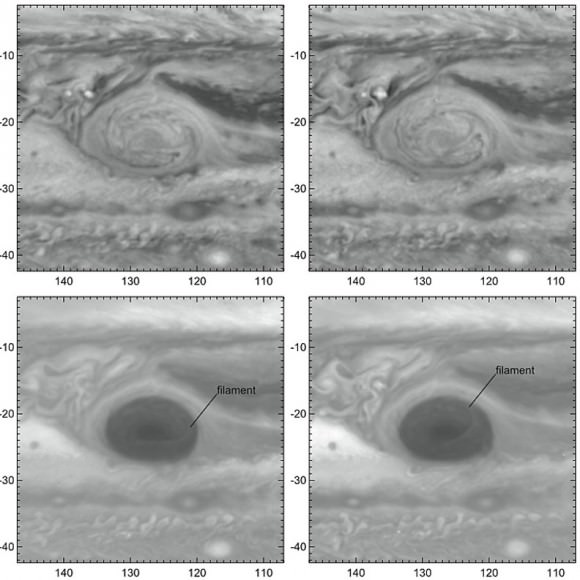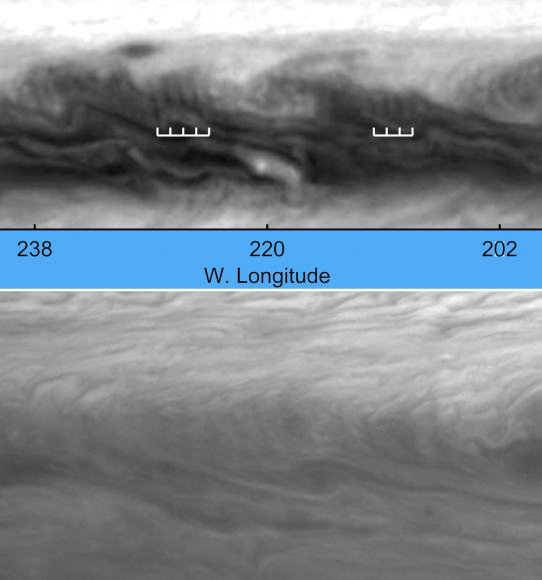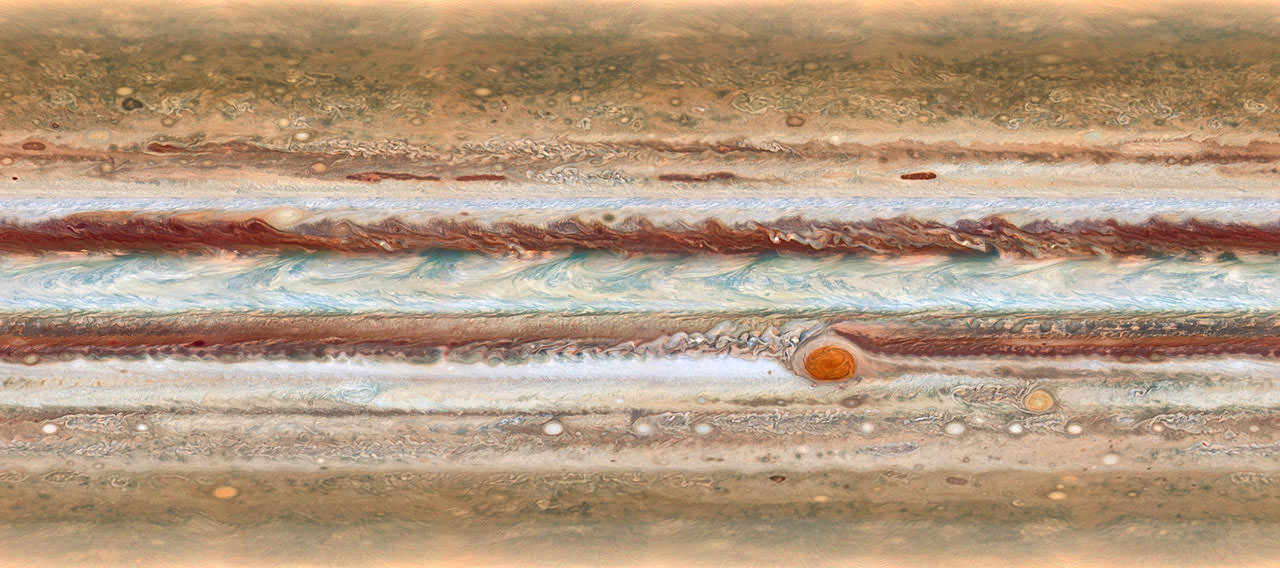Jupiter global map created from still images from the Hubble Space Telescope
It’s been widely reported, including at Universe Today, that the apple of Jupiter’s eye, the iconic Great Red Spot (GRS), has been shrinking for decades. Even the rate of shrinkage has been steadily increasing.
Back in the late 1800s you could squeeze three Earths inside the GRS. Those were the days. Last May it measured just 10,250 miles (16,496 km) across, big enough for only 1.3 of us.
And while new photos from the Hubble Space Telescope show that Jupiter’s swollen red eye has shrunk an additional 150 miles (240 km) since 2014, the good news is that the rate of shrinkage appears to be well, shrinking. The contraction of the GRS has been studied closely since the 1930s; even as recently as 1979, the Voyager spacecraft measured it at 14,500 miles (23,335 km) across. But the alarm sounded in 2012, when amateur astronomers discovered sudden increase in the rate of 580 miles (933 km) a year along with a shift in shape from oval to roughly circular.
For the moment, it appears that the GRS is holding steady, making for an even more interesting Jupiter observing season than usual. Already, the big planet dominates the eastern sky along with Venus on October mornings. Consider looking for changes in the Spot yourself in the coming months. A 6-inch or larger scope and determination are all you need.

New imagery from the Hubble OPAL program also shows a curious wisp at the center of the Great Red Spot spanning almost the entire width of the hurricane-like vortex. This filamentary streamer rotates and twists throughout the 10-hour span of the Great Red Spot image sequence, drawn out by winds that are blowing at 335 mph (540 km/hr). Color-wise, the GRS remains orange, not red. Currently, the reddest features on the planet are the North Equatorial Belt and the occasional dark, oval “barges” (cyclonic storms) in the northern hemisphere.

That’s not all. The photos uncovered a rare wave structure just north of Jupiter’s equator that’s only been seen once before and with difficulty by the Voyager 2 spacecraft in 1979. The scientists, whose findings are described in this just-published Astrophysical Journal paper, say it resembles an earthly atmospheric feature called a baroclinic wave, a large-scale meandering of the jet stream associated with developing storms.

Jupiter’s “current wave” riffles across a region rich with cyclonic and anticyclonic storms. The wave may originate in a clear layer beneath Jupiter’s clouds, only becoming visible when it propagates up into the cloud deck, according to the researchers. While it’s thought to be connected to storm formation in the Jovian atmosphere, it’s a mystery why the wave hasn’t been observed more often.
The OPAL program focuses on long-term observation of the atmospheres of Jupiter, Uranus and Neptune until the end of the Saturn Cassini Mission and all four planets afterwords. We have to keep watch from Earth as no missions to Saturn and beyond are expected for quite some time. To date, Neptune and Uranus have already been observed with photos to appear (hopefully) soon in a public archive.

